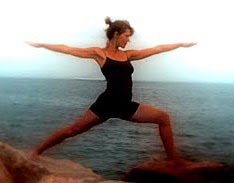This definition today is mainly used with Yoga.
Their source is from long before Buddhism was founded, it's a concept of training and healing to bring the body in shape. Asana are plenty of Yoga postures with different functionality to exercises the body and mind. It somehow relates to Buddhist mudras.To get you on the way to become a real Yogi, start here.
This positioning of your body is also helpful in bringing you better flexibility, patience and perseverance plus balance through this. This could be done in a seated, standing, turning or twisting posture, the posture comprises of not less than twenty asanas per set, that have
three levels, for beginner, a middle level and complex movements. Standing performances are of good for strengthening legs and lower muscles.
Doing it sitting is making your hips and lower portion of the back stronger. Balance postures are very good for improving your upper head region and strengthen muscles. Twisting and turning is great to improve flexibility of the whole body, after relax to get tranquility to your mind resulting in kind of mental rejuvenation.
Some popular workouts are.
Shvasana, known as corpse pose needs to lie on back in relaxed state.
Utkatasna, is a somehow strange since it needs to be in a sitting position without a chair. While in this pseudo raise your hands upwards.
Dhanurasana, also known as bow position, you lie down with raised legs and hands taking hold of legs by raising upper portion of body, this is bow shaped Vajrasana, demands to bend on your knees in such a way that your hips could be placed on foots or ankles, also rest your hands on knees.
Padmasana is a sitting posture with back upwards and place your legs on opposite thighs; it checks your tolerance level.
 |
| Practice yoga |
Many different type of yoga and types of meditation are used this days.
 |
 So are various posture and variants in general. This are asana, ashtanga, hatha, iyengar yoga and and other subgroups such as kundalini and pranayama. Since this runs more or less into meditation it also makes sense to think what types of meditation are in use. The exercises could be started with 4 basic types of practice, be aware that most postures are connected to breathing techniques.
So are various posture and variants in general. This are asana, ashtanga, hatha, iyengar yoga and and other subgroups such as kundalini and pranayama. Since this runs more or less into meditation it also makes sense to think what types of meditation are in use. The exercises could be started with 4 basic types of practice, be aware that most postures are connected to breathing techniques. |
| Meditation for beginner |
 |
| Buddhist Art in Bali |


Comments
Post a Comment